|
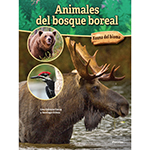
|
In Biome Beasts: Boreal Forest Animals, readers will discover how boreal beasts survive the harsh climate. The boreal forest teems with wildlife during the short, mild summer. This changes quickly when fall arrives. Only the living things that have adapted to the region's freezing temperatures and frozen land can remain in the forest year-round. The Biome Beasts series is NGSS-aligned and packed with interesting facts and vivid photos that introduce readers to a variety of land and water animals. Each book includes a glossary, comprehension questions, and an activity for home or the classroom. - Photo- and fact-filled nonfiction book for young readers supports NGSS standards
- Includes glossary, index, and comprehension questions
- Activity helps reader further engage with book content
NON-RETURNABLE: This item is non-returnable
|
Log in for Price
CD9781731655110
|
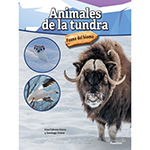
|
In Biome Beasts: Tundra Animals, readers will discover how animals survive and thrive in the treeless tundra. Tundra biomes have the harshest climates in the world. From the tiny Arctic bumblebee to the huge polar bear, every animal that lives in the Arctic or alpine tundra biome has adapted physically or socially to the harsh conditions. The Biome Beasts series is NGSS-aligned and packed with interesting facts and vivid photos that introduce readers to a variety of land and water animals. Each book includes a glossary, comprehension questions, and an activity for home or the classroom. - Photo- and fact-filled nonfiction book for young readers supports NGSS standards
- Includes glossary, index, and comprehension questions
- Activity helps reader further engage with book content
NON-RETURNABLE: This item is non-returnable
|
Log in for Price
CD9781731655189
|
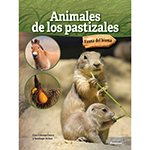
|
In Biome Beasts: Grassland Animals, readers will discover how these animals survive in prairies, steppes, and savannas around the world. Grassland biomes are home to a wide variety of animals. Whether grazing on grasses, building communities underground, or sailing overhead, animals have adapted to the challenges found in both temperate and tropical grassland biomes. The Biome Beasts series is NGSS-aligned and packed with interesting facts and vivid photos that introduce readers to a variety of land and water animals. Each book includes a glossary, comprehension questions, and an activity for home or the classroom. - Photo- and fact-filled nonfiction book for young readers supports NGSS standards
- Includes glossary, index, and comprehension questions
- Activity helps reader further engage with book content
NON-RETURNABLE: This item is non-returnable
|
Log in for Price
CD9781731655165
|
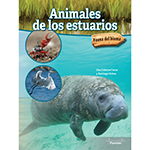
|
In Biome Beasts: Estuary Animals, readers will discover how and why animals survive and thrive in these sheltered biomes. Life in the estuary is always changing. Ocean tides of salt water flow in and out of the estuary and mix with the fresh water that flows from rivers and streams. The animals that swim or wade in the waters or make the mudflats their homes must have physical or social adaptations that allow them to live in the salty mix. The Biome Beasts series is NGSS-aligned and packed with interesting facts and vivid photos that introduce readers to a variety of land and water animals. Each book includes a glossary, comprehension questions, and an activity for home or the classroom. - Photo- and fact-filled nonfiction book for young readers supports NGSS standards
- Includes glossary, index, and comprehension questions
- Activity helps reader further engage with book content
NON-RETURNABLE: This item is non-returnable
|
Log in for Price
CD9781731655141
|
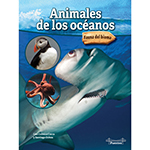
|
In Biome Beasts: Ocean Animals, readers will discover how animals survive in saltwater biomes and the skies above them. Most of Earth is covered by oceans and seas that are home to an amazing variety of animals. Some have adapted to life in the cold, dark aphotic zone. Others live in the disphotic zone where predators attack from above or below. Still others live in the top layer, the euphotic zone, where food is plentiful but competition for it is fierce. The Biome Beasts series is NGSS-aligned and packed with interesting facts and vivid photos that introduce readers to a variety of land and water animals. Each book includes a glossary, comprehension questions, and an activity for home or the classroom. - Photo- and fact-filled nonfiction book for young readers supports NGSS standards
- Includes glossary, index, and comprehension questions
- Activity helps reader further engage with book content
NON-RETURNABLE: This item is non-returnable
|
Log in for Price
CD9781731655172
|
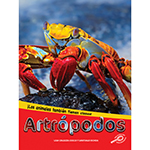
|
The book, Animals Have Classes Too!: Arthropods, introduces young readers to animal classifications by explaining how arthropods are grouped. Through photos, text, and sidebars, this title explores the differences and similarities between several classes, families, genera, and species of arthropods, and how animal classification works. Readers will discover what makes arthropods unique, how they are classified, and why sometimes scientists sort them in different ways. The Animals Have Classes Too! series for grades 1–3 gives an introduction to animal classifications, from kingdom to species. Each 24-page book in the series details how and why animals are classified, including common traits and various habitats, giving examples at each level. Each measuring 7.5 x 10, the titles in this series offer young readers an opportunity to learn more about Earth's magnificent animals. - Breaks down animal classification methods into easy-to-understand language
- Activity helps reader further engage with book content
- Includes glossary, index, and comprehension questions
NON-RETURNABLE: This item is non-returnable
|
Log in for Price
CD9781731655103
|

|
Can you find math in your art? Discover math in art through symmetry, geometry, and patterns in this STEAM based title. Includes a photo glossary and resources. - Explores NGSS standards topics through the lens of STEAM (science, technology, engineering, art, math)
- Activity helps reader further engage with book content
- Includes glossary, index, and comprehension questions
NON-RETURNABLE: This item is non-returnable
|
Log in for Price
CD9781731655196
|
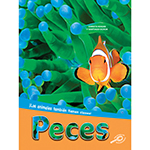
|
The book, Animals Have Classes Too!: Fish, introduces young readers to animal classifications by explaining how fish are grouped. Through photos, text, and sidebars, this title explores the differences and similarities between several classes, families, genera, and species of fish, and how animal classification works. Readers will discover the traits fish have that put them in a class of their own. The Animals Have Classes Too! series for grades 1–3 gives an introduction to animal classifications, from kingdom to species. Each 24-page book in the series details how and why animals are classified, including common traits and various habitats, giving examples at each level. Each measuring 7.5 x 10, the titles in this series offer young readers an opportunity to learn more about Earth's magnificent animals. - Breaks down animal classification methods into easy-to-understand language
- Activity helps reader further engage with book content
- Includes glossary, index, and comprehension questions
NON-RETURNABLE: This item is non-returnable
|
Log in for Price
CD9781731655080
|
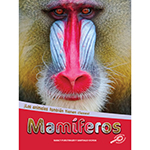
|
The book, Animals Have Classes Too!: Mammals, introduces young readers to animal classifications by explaining how mammals are grouped. Through photos, text, and sidebars, this title explores the differences and similarities between several classes, families, genera, and species of mammals, and how animal classification works. Readers will discover what traits put mammals in a class of their own. The Animals Have Classes Too! series for grades 1–3 gives an introduction to animal classifications, from kingdom to species. Each 24-page book in the series details how and why animals are classified, including common traits and various habitats, giving examples at each level. Each measuring 7.5 x 10, the titles in this series offer young readers an opportunity to learn more about Earth's magnificent animals. - Breaks down animal classification methods into easy-to-understand language
- Activity helps reader further engage with book content
- Includes glossary, index, and comprehension questions
NON-RETURNABLE: This item is non-returnable
|
Log in for Price
CD9781731655059
|
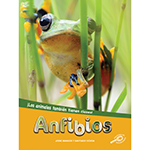
|
The book, Animals Have Classes Too!: Amphibians, introduces young readers to animal classifications by explaining how amphibians are grouped. Through photos, text, and sidebars, this title explores the differences and similarities between several classes, families, genera, and species of amphibians, and how animal classification works. Readers will find out how amphibians are classified and what makes them unique. The Animals Have Classes Too! series for grades 1–3 gives an introduction to animal classifications, from kingdom to species. Each 24-page book in the series details how and why animals are classified, including common traits and various habitats, giving examples at each level. Each measuring 7.5 x 10, the titles in this series offer young readers an opportunity to learn more about Earth's magnificent animals. - Breaks down animal classification methods into easy-to-understand language
- Activity helps reader further engage with book content
- Includes glossary, index, and comprehension questions
NON-RETURNABLE: This item is non-returnable
|
Log in for Price
CD9781731655073
|
|





